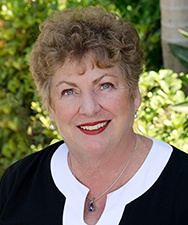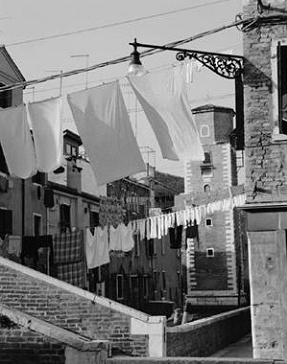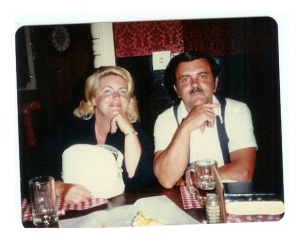Fifty years in housing: Part III
 NMA founder and president Nan McKay is celebrating a major milestone this year: her 50th year in housing. In an ongoing series of posts, she'll be sharing her stories of how the industry has changed over the course of decades.
NMA founder and president Nan McKay is celebrating a major milestone this year: her 50th year in housing. In an ongoing series of posts, she'll be sharing her stories of how the industry has changed over the course of decades.
Nan has previously written for the NMA blog on the topic of executive management and high performance achievement in the HCV program, and was recently profiled in the latest installment of our interview series.
- Part I: Interesting tidbits from 1937 to 1963
- Part II: Urban renewal on Concord Street
- Part III: The most exciting New Year’s Eve
- Part IV: Integrating Concord Street into the new highrise
- Part V: The men of the building
- Part VI: The women of the building
- Part VII: Public housing in the 1960s and 1970s
- Part VIII: The advent of Section 8
The most exciting New Year's Eve
As the elderly highrise building took shape and became a reality, it was time to start taking applications. I went all over town, talking up the building. At first it was slow. People were embarrassed to have to apply for low-income housing. It seemed like welfare to them. But when I got them into the office and spoke with them, I found out how poor some of them really were — some were even eating dog food to survive! This broke my heart, and I swore I would make life better for them. I had to!

Some were just lonely. Back then, most of the applicants were women in their 60s, and a few in their 70s. Most had been housewives, supporting their husbands, and had never worked. When their husbands died, they ended up living on Social Security benefits, and it wasn't easy. Either the apartment rental ate 80 or 90 percent of their income, or they had to live with relatives. They didn't like feeling dependent, but they didn't have a choice. Affordable housing would give them a choice.
It hurt my heart to have them feel that living in the highrise would be welfare, and I went on a crusade to explain to the whole community that this was their right! They or their husbands had worked all their lives and paid taxes — they deserved this! Feelings about the building began slowly to change, and we started to get more applicants. Word got around.
I had plans and color schemes, and prospective residents were allowed to pick out which unit they wanted. The city didn't have any other nine-story buildings, so living high in the building was scary! Most wanted the lower floors. A few wanted to be up high, and some of them loved looking over the stockyards where their husbands had worked — and they were high over Concord Street!
Finally the time for move-in came close. The walls were painted in the color scheme we'd selected, the tile was buffed to a shine, and the furniture donated by businesses for the community space (including a beauty shop and a pool table) was in place. The prospective residents gave their notice to move, and we were within a month of move-in.
One morning, very early, I received a phone call from the police department. Vandals had turned on the standpipe in the stairwells. It had run all night and the building had been flooded. It was a headline in the paper. As I sloshed through the water, we cried, and I thought, "What are all the people who gave their notice going to do?!" We were going to have a delay in move-in, and no one knew how long it would be.

We talked with landlords; people moved in with their families. It was not a happy couple of months. But this, too, did pass, and finally it was move-in time. It was almost Christmas, but many people were ready and wanted to move in. When they actually saw their apartments, some were upset because not all their oversized furniture would fit into the apartment space they'd been allotted. Some people had given up a house, and this space seemed tiny.
I didn't tell them that this space design was a whole new venture for HUD. Prior to this, elderly housing was made up of efficiencies with very few one-bedroom units, the thought being that these were single elderly people and they didn't need much space. Secretly, I thought a man had probably made that decision because the developer-types in HUD were all men. Women need space.
I read the rules over and over again and thought, "There's nothing that says you couldn't add a wall for a bedroom, as long as you stay within the space limits." Ha! I took the square footage of the efficiencies and the square footage of the one-bedrooms we were allotted, and convinced the powers-that-be that we could do all one-bedrooms. The day we received that approval, I danced around the office!
But, at move-in time, that story would have fallen flat. The residents thought the units were just too small. So we talked and talked, and finally they agreed they could probably give up the stuffed couch and go for just two of their chairs. Not that they were happy about it, mind you, but it could be done. And the move-in continued.
We had hired a caretaker and his wife, who turned out to be a wonderful addition to the building. Leo and his wife Lilly took the building and the residents into their hearts. Leo had been a farmer in North Dakota, and he could do anything. This was his building, and he put his heart and soul into it. Lilly was a little more skeptical at first, but the people won her over.
We had a deadline from HUD to get to 95 percent occupancy, and Christmastime wasn't the greatest time to move. We didn't have a full building by New Year's Eve, but the adventurous and brave ones were in. I suggested a New Year's Eve party, and the response was, "WHAT?! Stay up until midnight? Go to a party?!"
We'd built a kitchen into the community space with a pass-through into a huge "living room" with chairs all around the room — stuffed chairs that rocked. By this tim
e, I had been divorced for a year and had fallen in love with the most handsome man I had ever met (but that's another story). Anyway, he helped me get ready for the building opening by putting together the furniture, carrying a multitude of things, and then hosting the party with me.
We made appetizers, popped corn (at 25 I didn't think about dentures and popcorn), made punch, had the pool table up and ready to play on for the guys who liked to shoot pool, decorated the room, brought in a group for music, and we had a ball. They dragged out their best finery that hadn't been worn for a long time, and wore their best jewelry. We celebrated New Year's Eve at about 10 p.m., but it was the most exciting New Year's Eve that they, Jim, and I had had in many a year.
Next: Part IV: Integrating Concord Street into the new highrise
While serving as executive director of a Minnesota housing authority, Nan McKay started one of the nation’s first Section 8 programs. She has devoted the past two years to redesigning NMA’s HCV Executive Management course and rewriting the HCV Executive Management Master Book.


